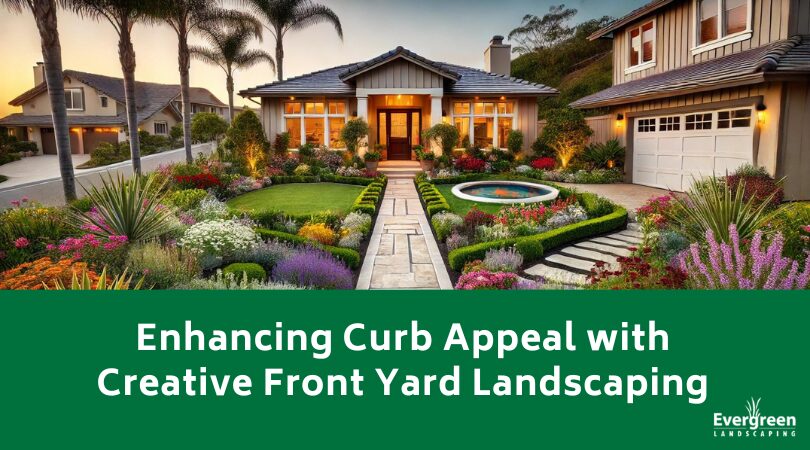Ground Covers for Shade to Replace Problematic Plants

Shady areas in your yard can be tricky to maintain, especially if you’re dealing with plants that aren’t suited to low-light conditions. These problematic plants often struggle to thrive, leaving behind patchy, unattractive spaces. Fortunately, ground covers provide an excellent alternative. Not only do they flourish in shady spots, but they’re also low-maintenance and add visual appeal.
If you’re looking for practical, attractive solutions to transform your shaded areas, consider these tips and ground cover options tailored for Central Coast California.
Why Replace Problematic Plants?
Plants that aren’t designed for shade can lead to several challenges, including:
- Uneven growth: Sun-loving plants won’t get the light they need, leaving bare or thin patches.
- High maintenance needs: Struggling plants may require extra watering, fertilization, and care, only to deliver subpar results.
- Soil erosion and weeds: Bare spots invite weeds and can contribute to erosion, especially during rainy seasons.
Switching to shade-tolerant ground covers ensures a lush, cohesive look that requires less upkeep and creates a healthier yard environment.
Benefits of Ground Covers in Shady Areas
Ground covers are a versatile and practical solution for shaded spots in your yard. Here’s why:
- Low Maintenance: Once established, many ground covers require minimal watering and little care.
- Weed Suppression: Dense coverage helps block weeds, keeping your yard looking tidy.
- Erosion Prevention: Ground covers stabilize soil and prevent erosion on slopes or under trees.
- Aesthetic Appeal: With a variety of textures, colors, and blooms, ground covers enhance the beauty of shaded spaces.
For homeowners with sloped yards, ground covers provide the added benefit of soil stabilization, even in hard-to-maintain spots.
Top Ground Covers for Shade
Here are some of the best ground covers for shaded areas, perfect for Central Coast California:
- Dwarf Mondo Grass
- This low-growing grass forms dense, dark green tufts and thrives in partial to full shade.
- It’s drought-tolerant once established and ideal for borders or under trees.
- Liriope (Lilyturf)
- A hardy option with grassy leaves and purple flower spikes in summer.
- Works well as a ground cover or edging plant in shaded garden beds.
- Japanese Spurge (Pachysandra)
- Spreads quickly and forms a lush carpet in deep shade, making it great for under trees.
- It’s pest-resistant and retains its color year-round.
- Sweet Woodruff
- Known for its fragrant white flowers in spring and vibrant green foliage.
- Ideal for shaded garden beds or as an accent around larger plants.
- Corsican Mint
- A low-growing, fragrant ground cover with tiny green leaves.
- Perfect for shaded areas between pavers or walkways, adding both beauty and a pleasant scent.
Tips for Successful Ground Cover Installation
To ensure your ground cover thrives, follow these tips:
- Prepare the Area: Remove weeds, grass, and debris to give your ground cover a healthy start.
- Address Soil Quality: Shaded areas often have compacted or nutrient-poor soil. Loosen the topsoil and mix in organic compost for a healthy planting base.
- Combat Competition: Large trees or shrubs may compete for water and nutrients. Use mulch to retain moisture and prioritize watering during the establishment phase.
- Plant Strategically: Space plants according to their mature size to achieve even coverage as they grow.
- Monitor Growth: Ground covers spread at different rates. Trim edges and fill gaps as needed to maintain even coverage.
Design Tips for Ground Cover Integration
Ground covers aren’t just practical—they’re a versatile design element that can elevate the aesthetics of your yard. Here are a few creative ways to integrate them:
- Combine with Shrubs: Pair low-growing ground covers like liriope with medium-sized shrubs to create layers of texture and depth in your garden.
- Accent Seasonal Flowers: Use evergreen ground covers as a neutral backdrop for colorful annuals or perennials, making flowers stand out even more.
- Define Pathways: Plant ground covers along walkways or driveways to soften hard edges and create a natural flow through your yard.
- Fill Problem Areas: Use ground covers in challenging spots like under dense tree canopies or on shaded slopes to keep your landscape cohesive and tidy.
Thoughtful placement of ground covers ensures they not only solve practical problems but also enhance the overall beauty of your outdoor space.
Replacing problematic plants with shade-tolerant ground covers can transform difficult areas of your yard into lush, vibrant spaces. These plants provide a practical solution for maintaining shady spots while adding beauty and functionality to your landscape.
Contact Evergreen Landscaping today to explore ground cover options for your yard and transform your shaded spaces into vibrant, low-maintenance areas!










